Discover 11 hidden attractions, cool sights, and unusual things to do in Cuckmere Haven (United Kingdom). Don't miss out on these must-see attractions: Lullington Church, Litlington White Horse, and Seaford Head. Also, be sure to include Seven Sisters in your itinerary.
Below, you can find the list of the most amazing places you should visit in Cuckmere Haven (England).
Table of Contents
Lullington Church
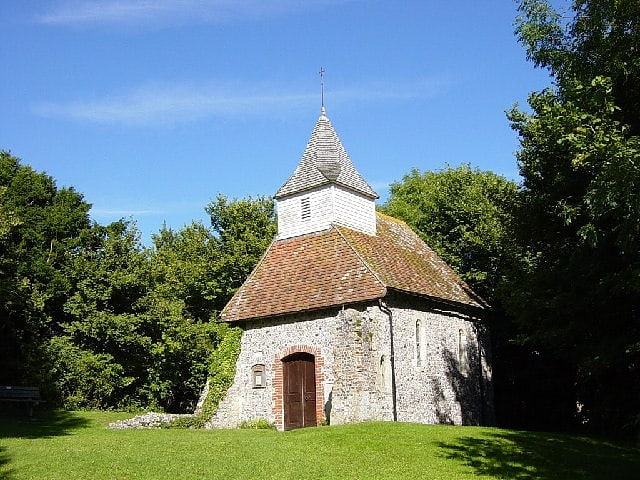
Lullington Church, also known as the Church of the Good Shepherd, on the South Downs at Lullington in East Sussex is one of several churches claimed to be the smallest church in England. It was built from the remains of the chancel of an earlier church that was destroyed by fire, generally believed to have occurred at the time of Oliver Cromwell. It measures a mere 16 feet square and seats 20 people.
The original church is believed to date from the late 12th or early 13th century and was built as a chapel in the parish of Alfriston, owned by Battle Abbey, and later became a separate parish. In 1927 the parishes of Alfriston and Lullington were merged. The original dedication of the church is unknown, and in 2000 the Bishop of Chichester dedicated the church to the Good Shepherd.
The church was the inspiration for Sea Power's song "The Smallest Church in Sussex", which featured as a b-side to "Remember Me" in 2003. The organ featured on that song comes from the harmonium inside the actual church.[1]
Litlington White Horse
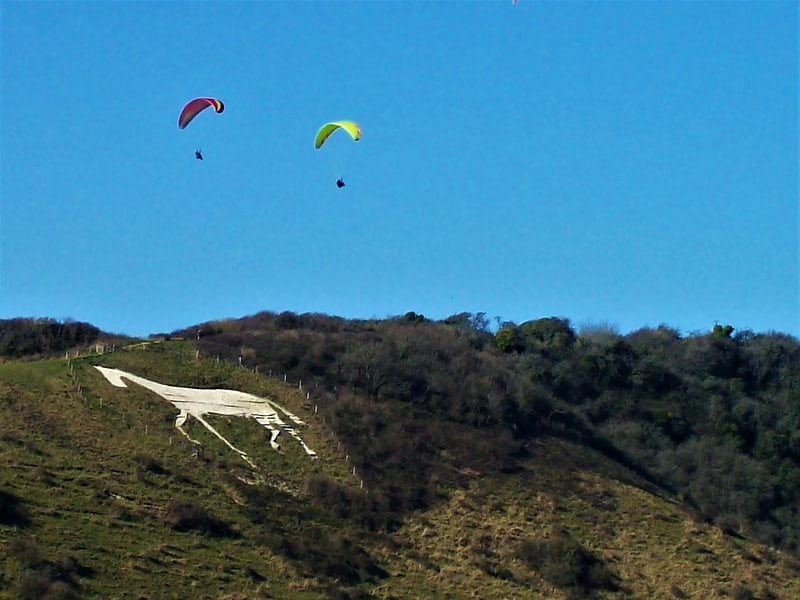
Historical landmark in England. The Litlington White Horse is a chalk hill figure depicting a horse, situated on Hindover Hill in the South Downs, looking over the River Cuckmere to the west of the village of Litlington and north of East Blatchington in East Sussex, England.
The current horse was cut in 1924 by John T, Ade, Mr Bovis and Eric Hobbis in a single night and stands at 93 feet long and 65 feet high. A previous horse was cut in either 1838 or 1860 on the same site. Since 1991, the horse has been owned by the National Trust, who regularly clean and maintain the horse along with local volunteers.
The Litlington White Horse is one of two hill figures in East Sussex; the other being the Long Man of Wilmington which is situated 3 miles north-east from the White Horse.[2]
Seaford Head
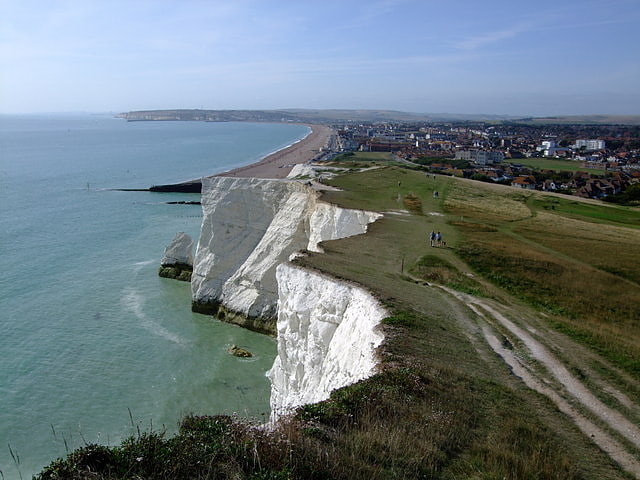
Nature reserve. Seaford Head is a 150.2-hectare Local Nature Reserve east of Seaford in East Sussex. It is part of Seaford to Beachy Head Site of Special Scientific Interest An area of 83 hectares is owned by Seaford Town Council and managed by the Sussex Wildlife Trust. The rest is divided between Seven Sisters Country Park, which is owned and managed by East Sussex County Council, and an area owned by the National Trust.
The site has diverse habitats with chalk grassland, chalk cliffs, scrub, vegetated shingle, wet grassland, saltmarsh and rockpools. Grassland flora include kidney vetch, squinancywort, moon carrot and clustered bellflower. There are butterflies such as silver-spotted skipper, chalkhill blue and adonis blue.[3]
Seven Sisters

Row of 7 white cliffs on the Channel. The Seven Sisters are a series of chalk sea cliffs on the English Channel coast, and are a stretch of the sea-eroded section of the South Downs range of hills, in the county of East Sussex, in south-east England. The Seven Sisters cliffs run between the mouth of the River Cuckmere near Seaford, and the chalk headland of Beachy Head outside of Eastbourne. Each of the Seven Sisters cliffs are distinguished by dips in-between them, which are the remnants of dry valleys in the chalk South Downs which are being gradually eroded by the sea.
Some of the cliffs and adjacent countryside make up the Seven Sisters Country Park, which is bounded on its inland side by the A259 road, and is itself a part of the larger South Downs National Park.[4]
Friston Forest
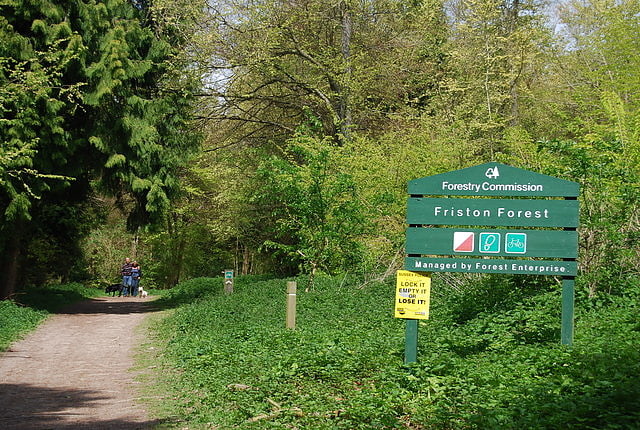
National forest in England. Friston Forest is a forest, located between Seaford and Eastbourne in East Sussex. It is part of the South Downs National Park area. The forest is managed by Forestry England and covers an area of 2.79 square kilometres, or 278.73 ha.[5]
Alfriston Clergy House
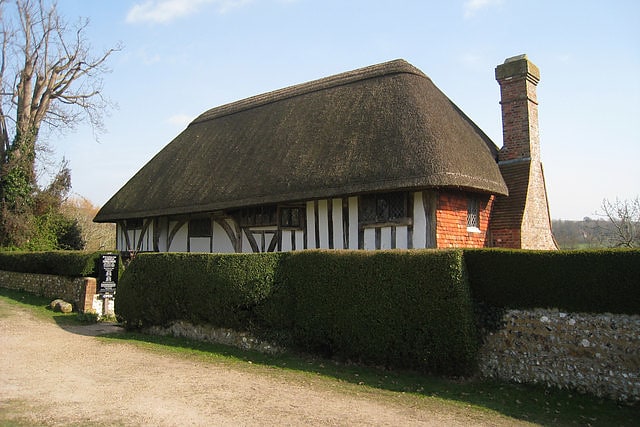
Building in Alfriston, England. Alfriston Clergy House in Alfriston, Polegate, East Sussex, England, was the first built property to be acquired by the National Trust. It was purchased in 1896 for £10. The house lies adjacent to the Church of St. Andrew. It is a Grade II* listed building.[6]
Lullington Heath
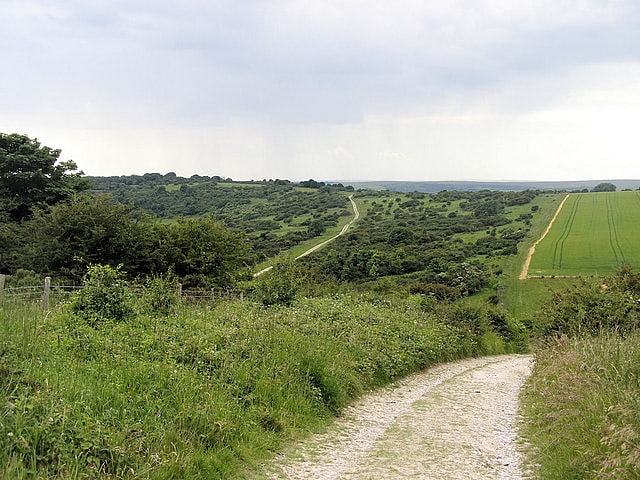
Lullington Heath is a 72.7-hectare biological Site of Special Scientific Interest west of Eastbourne in East Sussex. It is a national nature reserve and a Nature Conservation Review site, Grade I.
This site has two nationally uncommon habitats, chalk heath and chalk grassland. Chalk heath formerly covered most of the site but scrub took over much of it after myxomatosis almost wiped out the rabbit population in the 1950s. The grassland is rich in flowering plants and the scrub and rough grassland provide valuable habitats for invertebrates and birds.[7]
St Andrew's Church

Parish in Alfriston, England. St Andrew's Church is the parish church of Alfriston, East Sussex, England. This Grade I listed building was built in the 1370s and is also known as the 'Cathedral of the Downs'. It sits on a small, flint-walled mound, indicating that it was the site of a pre-Christian place of worship, in the middle of 'the Tye', overlooking the River Cuckmere, and is surrounded by the flowered graveyard. It is built in the form of a Greek cross.[8]
Alfriston Market Cross

Alfriston Market Cross is the only remaining market cross in Sussex, other than the elaborate market cross in Chichester. It is formed of a stone base and shaft on a brick plinth; the cross itself is missing, but the shaft is topped with a ‘cornice-like’ stone. The cross is a Grade I listed building.
A charter for a market at Alfriston was granted in 1406; the market cross was probably erected at about that time. Little, if anything, of the original cross, remains. The cross was altered in the 19th century; twice repaired after being damaged in the early 20th century; and rebuilt in 1955-56 after it was smashed when a lorry reversed into it. Notwithstanding the rebuilding, the cross is a rare feature within Sussex.[9]
Seaford to Beachy Head

Seaford to Beachy Head is a 1,108.7-hectare biological and geological Site of Special Scientific Interest which stretches from Seaford to Eastbourne in East Sussex. It has several Geological Conservation Review sites. Part of it is a Nature Conservation Review site, Grade I. An area of 150 hectares is a Local Nature Reserve managed by the Sussex Wildlife Trust.
This site is of national importance for both its biological and geological features. Its habitats include chalk grassland, maritime grassland, chalk heath, foreshore, chalk cliffs, river meanders, and greensand reef. It has nationally rare plants, invertebrates, and birds. The site also exposes extensive chalk sections dating to the Late Cretaceous epoch around 80 million years ago.[10]
Folkington Reservoir
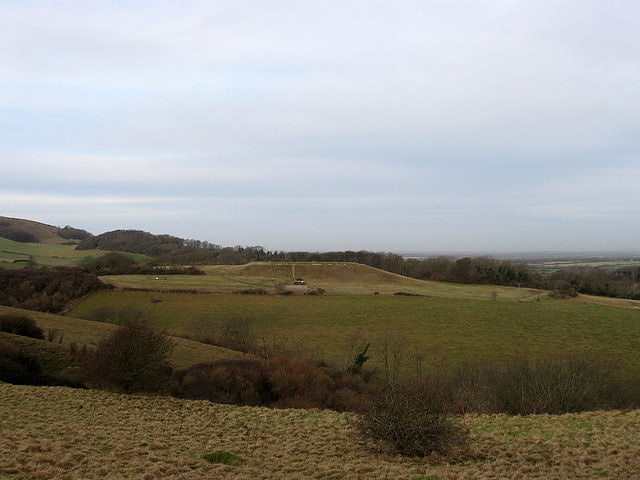
Folkington Reservoir is a 5.8-hectare biological Site of Special Scientific Interest south-west of Polegate in East Sussex.
The banks of the reservoir support a rich chalk grassland flora including kidney vetch, horseshoe vetch, pyramidal orchid, fragrant orchid and the rare and protected hairy mallow. The reservoir itself is covered and the bare chalk on top supports ruderal species such as scarlet pimpernel and parsley piert.[11]